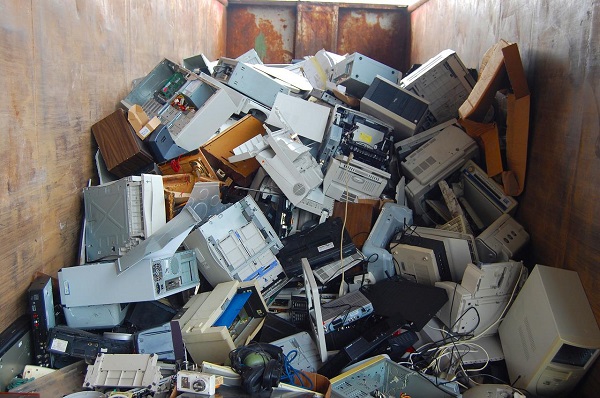 According to DoSomething.org, 20 to 50 million metric tons of e-waste are disposed of worldwide, every year. Planned obsolescence plays a huge part in this, by increasing the likelihood of manufacturers throwing older equipment away, which is costly and time consuming. Here, Jon Young, APAC sales director at global automation parts supplier EU Automation, explains why manufacturers should improve how they source obsolete parts, to keep existing equipment up-and-running and operate more sustainably.
According to DoSomething.org, 20 to 50 million metric tons of e-waste are disposed of worldwide, every year. Planned obsolescence plays a huge part in this, by increasing the likelihood of manufacturers throwing older equipment away, which is costly and time consuming. Here, Jon Young, APAC sales director at global automation parts supplier EU Automation, explains why manufacturers should improve how they source obsolete parts, to keep existing equipment up-and-running and operate more sustainably.
Planned obsolescence, when the end of a product’s usefulness is in-built by the manufacturer, take four main forms. They are contrived durability, prevention of repairs, perceived obsolescence and systematic obsolescence.
An example of contrived durability is when Apple, in 2018, admitted to purposely shortening the lifespan of its products to make way for newer models by slowing down older models through software updates. Prevention of repairs also begins with the manufacturer, when products become increasingly difficult to repair, leaving customers with no choice but to replace them entirely.
Perceived obsolescence is typically found in retail, for instance, when the media promotes trends to make older children’s toys less desirable than newer items. Systematic obsolescence, on the other hand, is common in machinery.
Put simply, as equipment gets older it becomes more difficult to source exact components, usually of a certain model or serial number, for replacements or repairs. This strategy gives manufacturers the opportunity to bring newer equipment to market and upsell it.
More haste, more waste
Outdated equipment creates several disadvantages. 52 per cent of manufacturing employees, surveyed by Atomik Research on behalf of Shire Leasing, said that outdated equipment regularly hindered their work. 47 per cent said more than half their factory equipment was used less than four months per year on average, due to it being outmoded.
Disposing of this equipment is the obvious choice for many manufacturers. DoSomething.org reports that discarded TVs, computers, peripherals ― including printers, scanners and fax machines ― mice, keyboards and cell phones totalled about 2.37 million short tons of e-waste in 2009 alone.
This huge amount of unnecessary waste has significant implications on the environment, particularly for countries where its landfills have limited space. For example, Australia’s Melbourne landfill is predicted to last only five more years, while Singapore’s only landfill site will be full by 2025.
While it’s possible to create new landfills, a longer-term solution is needed — especially as a lot of "e-waste" is actually not waste at all. According to DoSomething.org, much of it is “whole electronic equipment or parts that are readily marketable for reuse or can be recycled for materials recovery.”
Could tackling planned obsolescence be the key to reducing e-waste?
Ending obsolescence
France is leading the way in penalising planned obsolescence. The country has passed laws that require businesses to disclose their environmental impact and follow mandatory rules on eco-design and product updates. The law states that, “Planned obsolescence means the techniques by which a manufacturer aims to deliberately reduce the life of a product to increase its replacement rate. It is punishable by two years' imprisonment and a fine of €300,000.”
While France’s law might seem harsh, original equipment manufacturers (OEMs) themselves can also benefit by, instead, shifting their focus to aftersales support. Better support with repairs and upgrading of equipment would benefit their customers long-term, encouraging loyalty. OEMs can gain profits through resale, repair, upgrade and rental services without the need for creating excess waste.
For example, manufacturing equipment like CNC and grinding machines can be refurbished multiple times, extending its lifespan to provide customers with a better return on investment. But, in order achieve this time- and cost-effectively, plant managers need to improve how they source replacement parts.
This is where working with an automation parts supplier can be beneficial. Parts can be sourced to specific serial numbers to ensure compliance with older equipment in a fast turnaround. For example, EU Automation offers international delivery of its obsolete industrial parts in 48 hours or less, meaning that manufacturers can better plan equipment repairs while minimising production downtime.
By finding alternatives to simply disposing of plant equipment, manufacturers can help put a dent in the 20 to 50 million metric tons of e-waste are disposed of worldwide every year. In doing so, they can also keep their production environments as productive and sustainable as possible.
For more advice on planning for obsolescence, visit EU Automations Knowledge Hub. To discover the range of quality automation parts available from EU Automation, visit https://www.euautomation.com/sg/.














